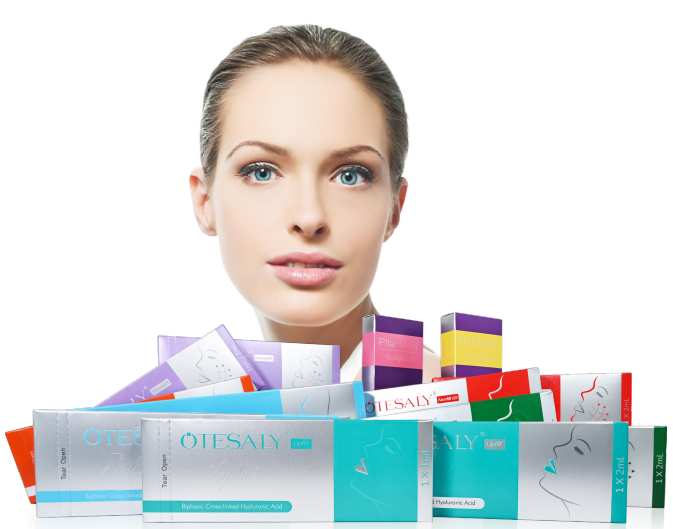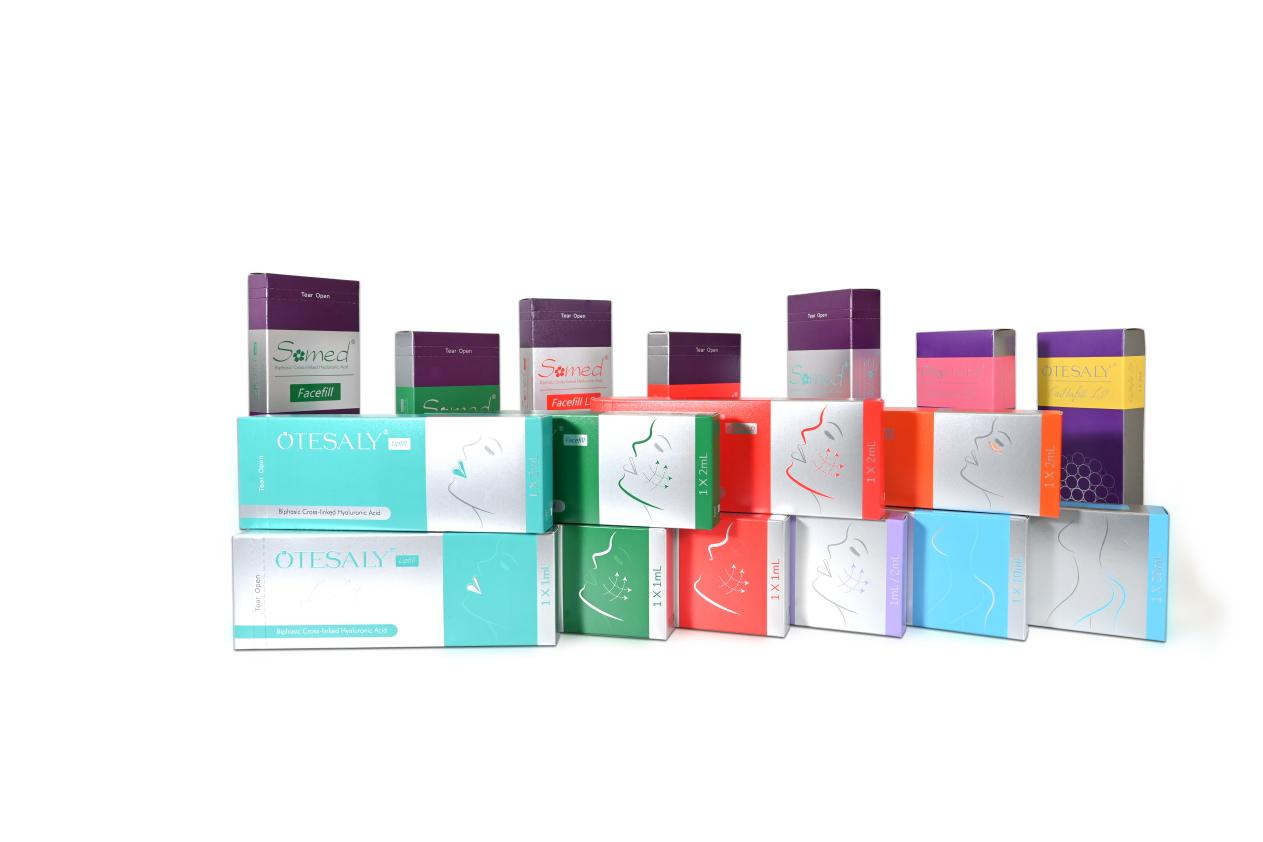In the booming non-surgical medical aesthetics market, the rejuvenation of the middle face is undoubtedly the crown jewel. Those seeking beauty are no longer content with simple local fillings but rather pursue an overall, natural and harmonious youthful effect.
As a professional medical aesthetics institution, distributor or agent, the challenge you face lies in: How to precisely solve the three core problems of tear troughs, cheek depression and nasolabial folds for your customers? The answer lies in the scientific understanding and strategic application of hyaluronic acid fillers.
This guide will delve deeply into the anatomical principles of middle facial aging and analyze how to achieve outstanding results that both meet patients' expectations and enhance the reputation of your institution by choosing high-performance products such as the AOMA Deep Lines series.
Understanding Facial Aging - Anatomy Beyond Appearance
Middle facial aging is not merely a simple "skin laxity", but rather a multi-dimensional process of volume loss and tissue structure changes.
Volume loss: The fat pad shrinks and shifts, and bone resorption occurs, resulting in a decrease in support and the formation of depressions.
Ligament laxity: The laxity of the dermal ligaments in the skin leads to tissue sagging, exacerbating the formation of the nasolabial fold.
Skin aging: Loss of collagen and elastin, changes in skin texture.
The correlation among these three regions is extremely strong. Hollows in the middle of the cheek can lead to insufficient support beneath, thereby intensifying the shadow of the tear troughs and the protrusion of the nasolabial folds. Therefore, a successful treatment plan must reconstruct the midface as a whole.
Precision Wins: Matching the Most Suitable HA Fillers for Different Regions

Not all hyaluronic acid fillers are suitable for all areas of the middle face. The key to its success lies in understanding the rheological properties of fillers (such as elastic modulus G 'value and cohesion) and precisely matching them with therapeutic goals.
Tear trough treatment: A perfect blend of art and science
The tear trough is one of the most delicate and challenging areas on the face, with extremely high requirements for the smoothness and cohesion of fillers.
Challenge: Thin skin, rich blood vessels, prone to the "Tyndall effect" (blue-gray tone).
Filler selection criteria:
●Low G 'value (soft texture) : Easy to spread flat and blend under thin skin, avoiding the formation of nodules.
●High cohesion: Ensure that the filler remains stable after injection, does not shift, and avoids swelling.
●Single-phase/homogeneous gel: Offers a smoother and more predictable injection experience.
Product strategy reference: For such fine areas, we strongly recommend AOMA Hydrofill 2ml, which is specially designed for demanding facial rejuvenation. Its precisely cross-linked gel structure, while maintaining an extremely soft and smooth texture, has excellent cohesion, which can precisely smooth out the depression of tear troughs and largely avoid the risks of bluing and displacement. It is an ideal tool for achieving a natural aesthetic effect.
Cheek Depression and Midface volume Reconstruction: Building a Solid "New Foundation"
The goal of treating sunken cheeks is to restore the lost volume and support of the face, just like building a "new foundation" for sagging soft tissues.
Challenge: Strong support is needed to enhance the middle face, and the effect should be long-lasting.
Filler selection criteria:
●High G 'value (high elasticity) : It provides strong tissue support, effectively resists gravity, and achieves a long-lasting non-surgical lifting effect.
●High cohesion: Ensures that the filler forms a stable "scaffold" at deep layers and is less prone to diffusion and deformation.
Product strategy reference: The AOMA Deep Lines series and the Deep Lines LD series are precisely designed for this purpose. Its high elastic modulus and excellent cohesion make it an ideal choice for deep facial support and volume reconstruction during the process. It can effectively lift the upper end of the nasolabial fold, with immediate and long-lasting results.
Nasolabial folds (laugh lines) : From filling to comprehensive lifting
The formation of the nasolabial fold is due to both dynamic muscle movement and static factors such as sagging of the middle face and volume loss.
Challenge: It is necessary to handle both volume loss and tissue ptosis simultaneously.
Filler selection criteria:
●Moderate to high G 'values: It can be used for direct filling of deeper nasolabial folds and can also be indirectly improved through mid-face lifting.
●Excellent Viscosity (Viscosity) : ensures smooth injection and precise shaping during injection.
Treatment strategy: For severe and significantly sagging nasolabial folds, the best strategy is not to directly fill in large quantities, but to prioritize the use of high-support products such as AOMA Deep Lines for intermediate facial lifting, which often miraculously reduces the depth of the nasolabial folds, and then precisely modifies with a small amount as needed.
Conclusion
Facial rejuvenation is both an exact science and an art that pursues harmony. By deeply understanding the anatomical principles of aging and precisely matching HA fillers with excellent rheological properties such as the AOMA Hydrofill 2ml for tear troughs, AOMA Deep Lines with Lido or without Lido series for cheek depresses and nasolabial folds, you will be able to provide your customers with truly satisfying natural -looking rejuvenation effects.
Let's join hands and work together, not only to provide products, but also to jointly define the gold standard for facial rejuvenation. Contact us immediately to obtain detailed product information, clinical support plans and highly competitive wholesale and agency policies.

FAQ
Q1: What is facial filling and how does it work?
Facial hyaluronic acid (HA) filling uses injectable HA dermal fillers to restore volume, smooth wrinkles, and enhance facial contours. HA binds water to create instant fullness, while the body's collagen and elastin respond to the treatment over time, yielding a refreshed appearance.
Q2: How long do results last after a facial filling?
Durability varies by product, area, and individual metabolism, but typical results last 6 to 18 months. Maintenance treatments are often recommended to sustain the desired look.
Q3: How to match the most suitable hyaluronic acid products for different indications?
The rejuvenation of the middle face requires precise product matching strategies.
• The AOMA Deep Lines series is suitable for deep reconstruction of the cheek. Its high G' value can effectively restore volume and improve severe nasolabial folds and mandibular contours.
• AOMA Deep Lines LD series balances support and operability. This product is suitable for direct filling of moderate to severe nasolabial folds, and can also be used for marionette wrinkles and superficial cheek supplementation.
• AOMA Hydrofill 2ml is specifically optimized for fine areas. Its low G' value and high cohesion are particularly suitable for tear trough filling, which can minimize the risk of bluing to the greatest extent.
Q4: How can suppliers support the business development of medical aesthetics institutions?
A reliable supplier should offer comprehensive support beyond the product itself:
•Clinical promotion materials can accelerate customer decision-making. Professional before/after case libraries and technical documentation can significantly increase the conversion rate of consultations.
•Technical training enhances the injection effect. Operation training tailored to product features can help doctors master injection techniques more quickly and enhance customer satisfaction.
•Stable product quality builds long-term trust. Market-proven hyaluronic acid filler longevity is the fundamental guarantee for the continuous operation of institutions.
Q5: How can one quickly master the product application logic of facial filling?
A concise clinical decision-making path can be followed:
•High support products are the first choice for sunken cheeks and midface lifting.
•Products that require balanced support and shaping capabilities for the treatment of nasolabial folds and marionette lines.
•For fine areas such as tear troughs, special fillers with low elasticity and high cohesion must be used.
This process-oriented plan can help doctors quickly build confidence in treatment and ensure the effect of naturally looking HA fillers.





















